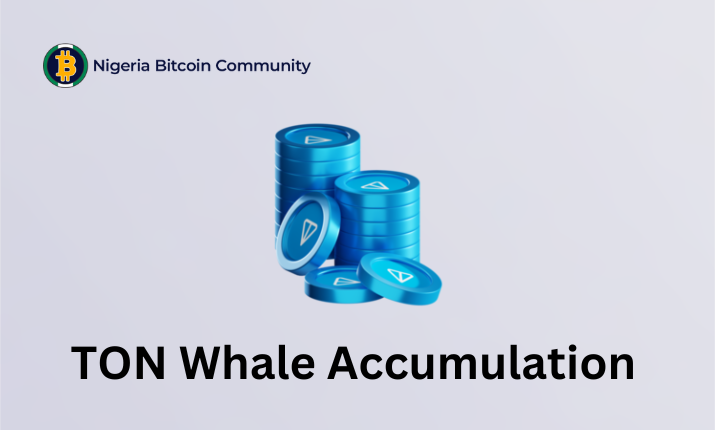Toncoin (TON), a cryptocurrency closely linked with Telegram, has been in the news recently due to significant activity among its largest holders, often referred to as “whales.”
These major investors have been actively accumulating TON, a trend that typically signals bullish sentiment and potential price increases.
Despite this heightened activity, however, Toncoin’s price remains frustratingly stagnant, showing limited upward movement even as whales continue to accumulate in large volumes.
The situation reveals a complex landscape for Toncoin, where a clear division between bullish whale investors and bearish short-term holders creates conflicting pressures on its price.
This clash has resulted in a price standoff, with substantial holdings shifting hands without a corresponding rise in market value.
The dynamics within the TON market shed light on how the behaviors of different investor groups can collectively influence the coin’s stability—or lack thereof.
In this article, we explore the recent trends in Toncoin’s whale activity, the ongoing challenges posed by short-term holders, and the current price outlook for TON as it hovers in a precarious position.
From high-value transactions to shifts in market sentiment, these insights paint a fuller picture of what may be next for Toncoin and whether it can break out of its current price slump.
Toncoin Whales in Accumulation Mode
In recent weeks, Toncoin’s large holders, or “whales,” have been consistently accumulating, with netflow rising sharply by 131.63% over the past seven days.
Netflow, a key metric, tracks the net buying and selling of substantial holders—those with addresses holding at least 0.1% of the token’s circulating supply.
A positive surge indicates that whales are buying more than they’re selling, often considered a bullish indicator, as it suggests confidence among major investors that Toncoin’s value may soon rise.
Data from IntoTheBlock further supports this trend, showing that the daily volume of Toncoin transactions valued between $1 million and $10 million has surged by almost 94% in the past month.
Even larger transactions, exceeding $10 million, have also seen a rise of about 67%, underscoring intensified interest from high-value investors.
While whale activity is growing, short-term holders (STHs) have been quick to sell, adding downward pressure to Toncoin’s price.
As of this writing, Toncoin is currently trading at $5.10 Toncoin/USDT at Gate.io.
According to IntoTheBlock, the holding duration among these short-term investors has dropped by 29% in the last month, signaling that those holding Toncoin for less than a month are increasingly offloading their tokens sooner.
Often referred to as “paper hands,” short-term holders are more likely to sell at the first sign of uncertainty, which can further strain the price, especially if they hold a substantial portion of the circulating supply.
This rapid selling from STHs has been a significant factor in Toncoin’s recent 10% decline, as the added supply from short-term sales limits price recovery potential.
Will TON Reach New Lows?
As of this writing, Toncoin is priced at $5.10 on Gate.io, but decreasing buying pressure suggests it could revisit the September 6 low of $4.46, implying a potential 13% decline from its current price.
On a more optimistic note, a substantial demand increase could allow Toncoin to challenge its nearest resistance at $5.26.
Should it break this level, TON may target the next resistance at $5.91, setting the stage for a rally to its two-month high of $6.36.
In summary, while whale accumulation suggests confidence from major holders, persistent selling from short-term investors continues to restrain Toncoin’s price potential.
The Rise of TON
Toncoin (TON) and the TON Blockchain, known as The Open Network, have a unique origin story intertwined with Telegram, the widely popular messaging platform.
The concept of TON was first introduced in 2017 by Telegram’s founders, Nikolai and Pavel Durov, who envisioned a decentralized network capable of powering a new generation of internet applications, ranging from payments to social media.
This initiative was groundbreaking because Telegram was one of the first major platforms to consider embedding a cryptocurrency ecosystem, attracting significant attention from users and investors.
The goal of TON was ambitious: to create a scalable and secure blockchain capable of handling millions of transactions per second.
The TON Blockchain proposed several innovative features, including a multi-layered structure, sharding for efficient transaction processing, and a unique consensus mechanism called Proof-of-Stake (PoS) to ensure high-speed validation.
TON’s design aimed to solve many of the scalability issues faced by earlier blockchains, enabling it to serve as the foundation for decentralized applications (dApps) and services within the Telegram ecosystem and beyond.
However, TON’s early development faced setbacks, most notably from regulatory challenges.
Telegram initially raised $1.7 billion through a private Initial Coin Offering (ICO) in 2018 to fund the network’s development.
But in 2019, the U.S. Securities and Exchange Commission (SEC) deemed the sale of TON’s Gram tokens to be an unregistered securities offering, ultimately halting Telegram’s direct involvement in the project.
In 2020, following a prolonged legal battle, Telegram was forced to withdraw from the TON project, and the platform’s code was released as open-source.
This setback didn’t spell the end for TON.
A group of independent developers, calling themselves the Free TON Community, took over the project, rebranding it as The Open Network.
Under the community’s stewardship, TON continued to develop, launching new features, applications, and initiatives.
In 2021, the network rebranded its native cryptocurrency as Toncoin (TON), and the blockchain has since seen steady growth, with increasing adoption and transaction volumes, largely driven by Telegram’s growing user base and renewed interest in blockchain solutions that integrate with social platforms.
Today, TON aims to fulfill its original vision by powering a range of Telegram-linked applications, including gaming, decentralized finance (DeFi), and do-to-earn apps, with Toncoin as the network’s utility token.
While its path has been unconventional, TON’s community-driven development has allowed it to gain traction, distinguishing it as one of the few blockchain projects born from a major social media platform and sustained by a resilient and innovative developer community.



0 Comments